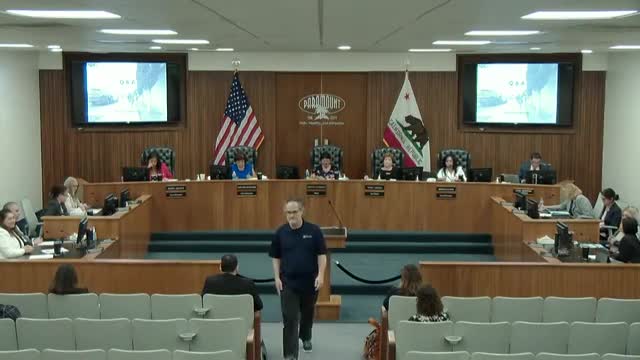Sheriff's drone program fails to curb street racing chaos
August 16, 2024 | Paramount, Los Angeles County, California

This article was created by AI summarizing key points discussed. AI makes mistakes, so for full details and context, please refer to the video of the full meeting. Please report any errors so we can fix them. Report an error »

In a recent city council meeting, officials discussed the outcomes of the Los Angeles County Sheriff's Department (LASD) drone pilot program aimed at addressing street racing and intersection takeovers. The initiative, which began following a request from the council in January, sought to utilize drones as a tool for monitoring and enforcing these high-risk activities.
Assistant Public Safety Director Eric Wilson and Lieutenant Joe Morales presented findings from the program, which was conducted over two test dates in April. They reported that while the drones were intended to provide aerial surveillance and assist in identifying vehicles and spectators during street racing events, the practical application faced significant challenges.
Key issues included a lengthy pre-flight preparation time, limited battery life of approximately 15 minutes, and restrictions on recording capabilities due to privacy and FAA regulations. The drones required a clear line of sight, which hindered their ability to follow vehicles involved in illegal activities. Consequently, traditional policing methods proved more effective, as demonstrated when officers successfully apprehended a driver using standard patrol techniques.
Despite the initial goals, the program did not meet expectations, leading to a recommendation from the Public Safety Commission to discontinue the drone initiative. Instead, the council is considering reallocating the $30,000 budgeted for the drone program towards enhancing the existing flock security camera system, which has shown promise in capturing violations and supporting law enforcement efforts.
The council's decision reflects a shift towards more reliable surveillance methods, with plans to install additional cameras at key locations to improve real-time monitoring and data collection. This strategic pivot aims to bolster public safety while optimizing resource allocation in response to the challenges faced during the drone pilot program.
Assistant Public Safety Director Eric Wilson and Lieutenant Joe Morales presented findings from the program, which was conducted over two test dates in April. They reported that while the drones were intended to provide aerial surveillance and assist in identifying vehicles and spectators during street racing events, the practical application faced significant challenges.
Key issues included a lengthy pre-flight preparation time, limited battery life of approximately 15 minutes, and restrictions on recording capabilities due to privacy and FAA regulations. The drones required a clear line of sight, which hindered their ability to follow vehicles involved in illegal activities. Consequently, traditional policing methods proved more effective, as demonstrated when officers successfully apprehended a driver using standard patrol techniques.
Despite the initial goals, the program did not meet expectations, leading to a recommendation from the Public Safety Commission to discontinue the drone initiative. Instead, the council is considering reallocating the $30,000 budgeted for the drone program towards enhancing the existing flock security camera system, which has shown promise in capturing violations and supporting law enforcement efforts.
The council's decision reflects a shift towards more reliable surveillance methods, with plans to install additional cameras at key locations to improve real-time monitoring and data collection. This strategic pivot aims to bolster public safety while optimizing resource allocation in response to the challenges faced during the drone pilot program.
View full meeting
This article is based on a recent meeting—watch the full video and explore the complete transcript for deeper insights into the discussion.
View full meeting
